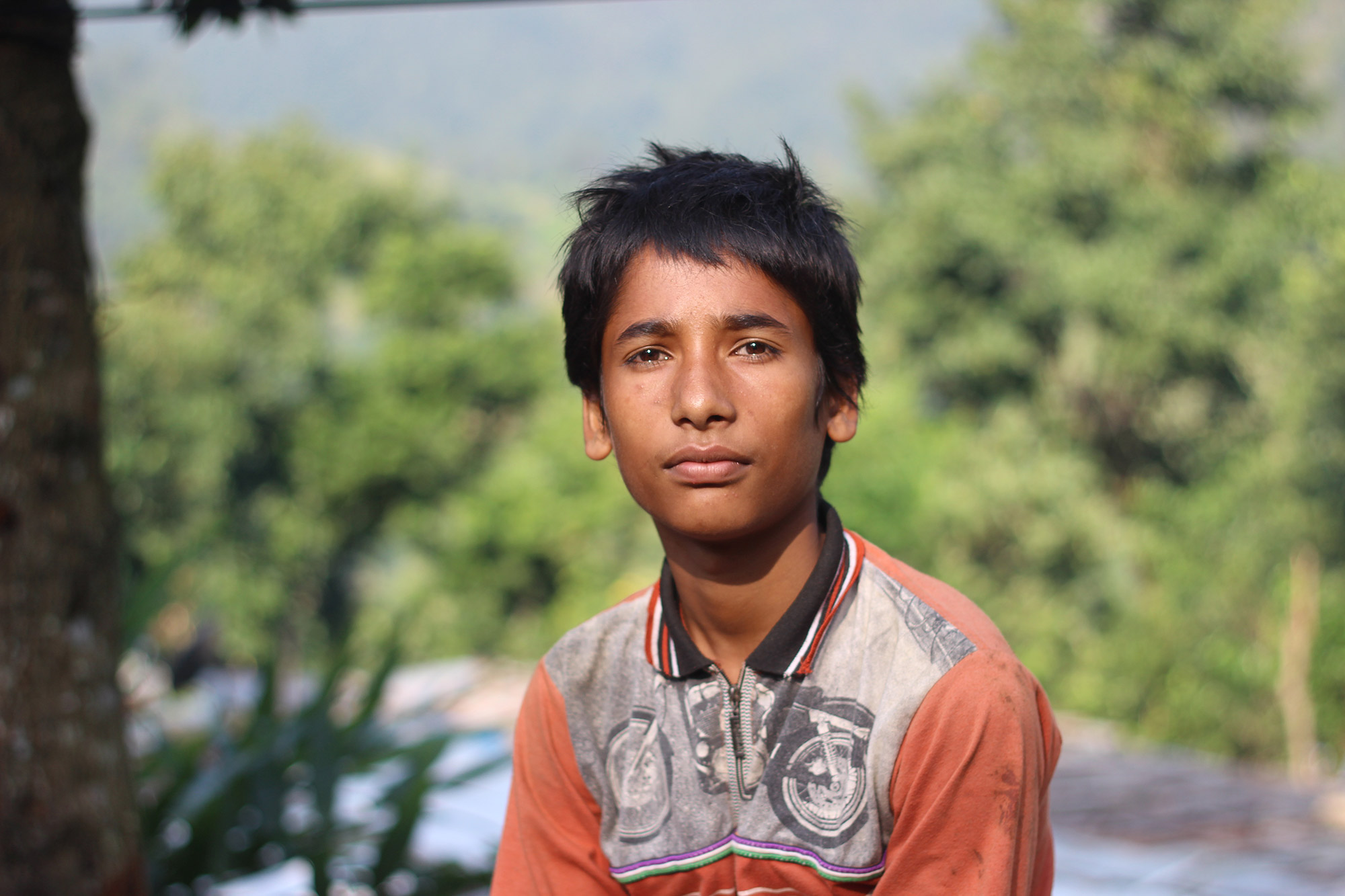The villagers of Chimling Beshi had an incredible escape from death in April. Nearly every house here suffered severe damage in the earthquake, but Chimling Beshi, which falls under Sindhupalchok, the district most affected by the disaster, lost no lives. “It was truly a miracle,” said Ram Parajuli, one of the survivors. As the disaster made their old settlement more vulnerable to landslides, the villagers have now relocated, building temporary shelters using the tin sheets they could salvage from the ruins of their houses and bamboo from the jungle. Six months after the earthquake, Naomi Mihara and Ritu Panchal visit the community.

Dashain, the longest and most auspicious festival on the Nepalese calendar, came just six months after the earthquake. Festivities this year were understandably muted, and many villagers are waiting for the government to distribute the promised compensation so that they can move out of temporary shelters.

Ram Parajuli, in front of the remains of his old house. It’s hard to imagine that just six months ago there were habitable structures here. The wilderness has devoured everything. Unruly weeds grow on stray bricks, long wooden beams look like they have been carelessly tossed around, and bits of broken furniture poke out of the overgrowth. Ram has no choice but to face this sight every day, for his cows are still housed in a small shed here.

The shelters are small and cramped, especially during the festival season, when many relatives come to stay. At night, you can hear the sounds of TVs blaring from the different shelters, and there is little privacy.

“If I had one wish in the whole world it would be to have my own house where my family can live happily and I can study,” says 13-year-old Bigyan Parajuli. “We don’t have enough space here. It is always crowded. People get drunk and fight outside and others play the TV loudly. I cannot study properly.” Bigyan knows the only way to forge a better future is to get a good education. “I think I might become an engineer someday.”

Villagers now have to hike to the old village site some distance away to tend to their fields and animals, fetch water, and cut grass. Education has suffered further, as it now takes more time for school children to finish their chores.

Bal Kumari Parajuli used to live in a two-storey house, built just four years ago, with her children and grandchildren. After the earthquake her son decided to move with his family to Kathmandu, because his children were terrified of another earthquake. Now, she misses her family. She and her husband cannot move because they have animals to look after in Chimling Beshi.


